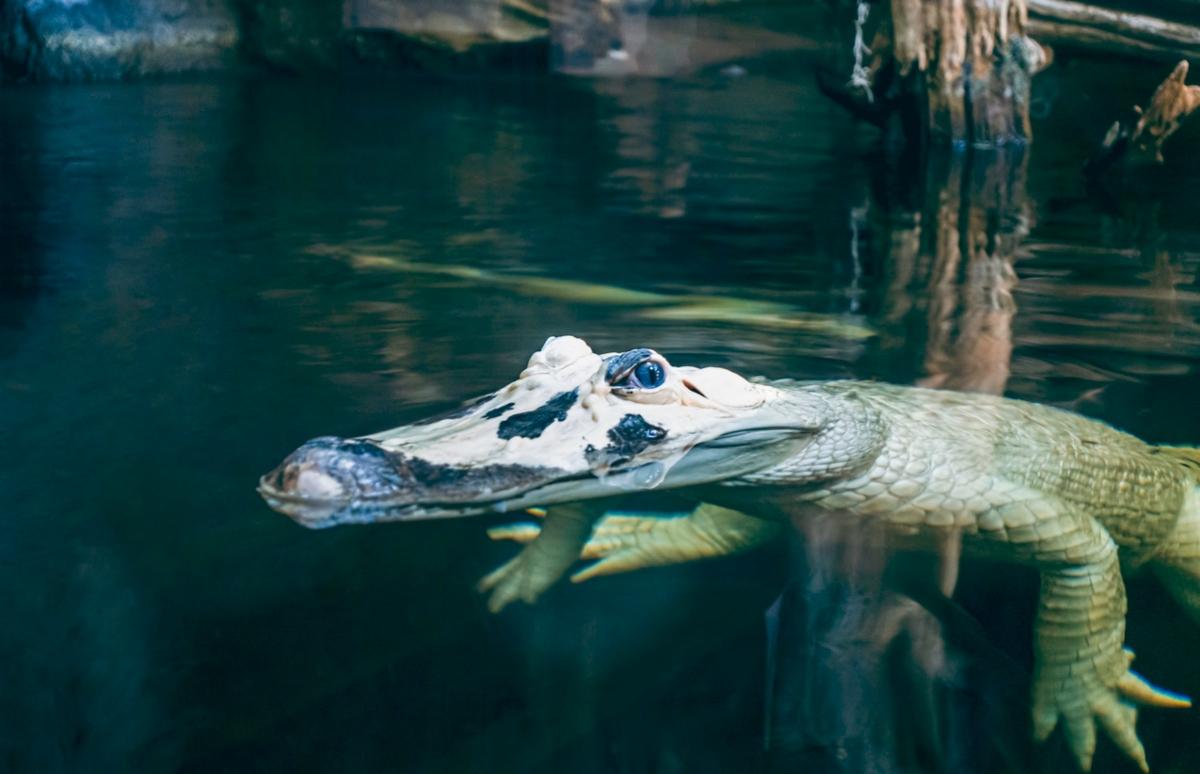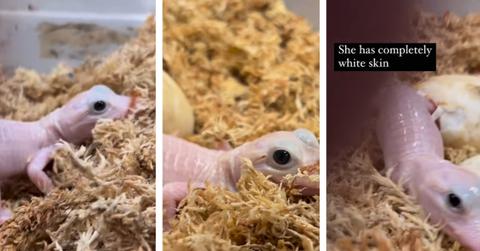Baby Leucistic Alligator Is One of Only 8 Known to Exist in the World — and She's so Cute
Published Dec. 8 2023, 12:26 p.m. ET
An adorable, scaly baby leucistic alligator was born at a theme park in Florida on Dec. 7, 2023. The tiny reptile is believed to be one of only eight alligators in the world with this particular genetic condition. As the world marvels at her teeny form, many people have started to wonder: what is a leucistic alligator?
Although we don't love the general concept of zoos and would much prefer animals get to live in their natural habitats, we hope this baby alligator will be happy and well cared for. We've got all the details on this cute addition to Gatorland, as well as the key differences between a leucistic alligator and an albino alligator.

A leucistic alligator was born at Gatorland in Florida.
According to the Instagram for Gatorland, an animal theme park, a baby leucistic alligator is the first born that can be traced back to a nest of this type of alligator found in Louisiana 36 years ago. The leucistic female alligator also has a brother with the typical colors of a baby alligator.
President and CEO of Gatorland, Mark McHugh said leucistic alligators are "the rarest genetic variation in the American alligator," per CNN. The baby, weighing 96 grams and measuring 19.3 inches long, was born to parents Jeyan and Ashley. Gatorland said the bundle of joy is one of only eight leucistic alligators worldwide.
If you're interested, you can post your name suggestions for the leucistic alligator and her brother on Gatorland's social media pages. One fan suggested Lightning for the girl and Thunder for the boy. Another commented that the zoo should name her Lucy.
These baby alligators (who look a great deal like lizards) aren't going to be on display at Gatorland for some time, as the park will be monitoring their health very carefully until at least "early next year," per Gatorland's Instagram.
Leucistic alligator vs. albino: what's the difference?
Upon first glance at the leucistic alligator baby in Gatorland, you might assume she's an albino. However, there are some major differences, and a leucistic alligator is even less common. According to the Robert L. Bowles Nature Centre, several species can have leucism, in which the animal has a "partial loss of melanin production and/or distribution."
A-Z Animals explains the main difference between leucistic and albino creatures. Although they both have plenty of white in their coloring, the main difference is that an albino animal has no melanin and, therefore, no pigmentation in any part of their body. In contrast, a leucistic animal can still have some pigmentation. Leucistic creatures can look white, patchy, or pale rather than completely white. Plus, their eyes are not affected.
According to the Audubon Nature Institute, white alligators are quite rare, though not a separate species from American alligators. The Institute also notes that the number of leucistic alligators may be skewed because their white coloring makes them easy for prey to spot. The Institute says these alligators have "translucent white skin and deep blue eyes with a hint of pigmentation splashed here and there."
The newly hatched alligator certainly fits that description!
